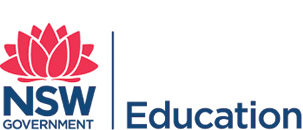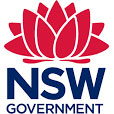Delivering a fast, effective diagnostic testing program to NSW schools

Teachers have one method to understand student progress: assessments. So when COVID hit in 2020 and students couldn’t sit important tests like NAPLAN, teachers had a worrying gap in their data, widening with every term the school was closed.
In NSW, their Department of Education (NSW DoE) sought Janison’s help. We’d recently collaborated with the Department on a new diagnostic assessment – Best Start Year 7 – and they wanted to partner with us on a new test that would address the expanding gap in student data, so that teachers could plan and take action.
The brief
The NSW DoE wanted to give schools a new diagnostic assessment that showed how students were tracking in literacy and numeracy. The “Check-in” assessment needed to be online to accommodate lockdowns, run during Term 3, and delivered to Years 3, 5, and 9.
In a letter to staff, the NSW DoE said:
The Check-in assessments are designed to supplement existing school practices to identify how students are performing, and to help teachers tailor their teaching more specifically to student needs.

NSW Government
Internal letter to staff
A crucial requirement was being able to deliver test results swiftly, so that teachers could immediately see which students were struggling, where they were struggling, and what they could do to help.
80% of NSW teachers who did professional development set more assessments, including diagnostic tests1
67% of teachers design lessons based on data about students’ prior knowledge and experiences2
26% of Australian school students received educational adjustments in 2024, due to disabilities3
The challenge
Before COVID, NSW schools typically relied on NAPLAN to understand how students were faring, and had to wait months for results to come through. Despite its inefficiencies, it was a solution that was simple and familiar for teachers.
When COVID hit and trapped everyone in their homes, schools weren’t prepared to assess from a distance. They had no contingency plan for testing students in the safety of their homes, digital or otherwise. And this wasn’t their fault – a world-changing pandemic had never happened before.
A 2022 survey revealed that 52% of students felt their learning suffered due to COVID-19 disruptions4
In 2022, 59% of students didn’t feel prepared for the school year and 22% said they fell behind5
71% of surveyed teachers felt underappreciated and overworked during the pandemic6
So much was unknown, unfamiliar, and distressing for educators. They needed an urgent digital solution that would allow them to continue assessing and improving their students’ foundational skills.
Our solution
 Working together with the Department, we created the new Check-in assessment.
Working together with the Department, we created the new Check-in assessment.
The assessment was an online, multiple-choice literacy and numeracy test that NSW schools could set in a three-week window in Term 3. Marking was fully automated, with results delivered to schools in just 48 hours.
The assessment and its questions were designed by the Department, and the tests were delivered on Janison’s assessment platform. The NSW DoE’s reporting and analytics system (SCOUT) was also integrated with the platform so that results could easily be accessed by schools.
The results
1,775 schools and 157,000 students completed the Check-in assessment during Term 3 of 2020 – more than 80 per cent of eligible schools.
It was praised as a huge success by participating schools and stakeholders. “In a year where we had limited opportunities,” one principal said, “a formal assessment process like this was a great benefit to our teachers.” When asked whether they found the Check-in assessment useful, a teacher from another participating school said: “Yes! It’s been great to have results so quickly.”
Former Minister for Education Sarah Mitchell said: “The response from schools to the Check-in package has been fantastic.” She added: “Feedback from the assessment tool will contribute to the NSW Government’s curriculum overhaul, which will see a renewed focus on literacy and numeracy.”
Feedback has been overwhelmingly positive and is a great example for education ministers across the country. Schools said the major benefits were quick turnaround for results, diagnostic information at syllabus and learning progression level, and ability to use the results to inform their classroom practice.
Sarah Mitchell
NSW Minister for Education
The NSW Teachers Federation union hailed the project as an “enlightened approach” to assessment, adding: “The Federation congratulates the Minister on the literacy and numeracy Check-in assessment package.”
Janison’s Chief Customer Officer Derek Welsh said “Due to the success of the rollout and how well it was received by schools and teachers, we are anticipating an even greater demand for the insights these assessments provide.” He added that private and other non-government schools were keen to be part of the landmark initiative.
He was right. Four years on at the close of 2024, the Check-in assessment has become a permanent fixture for NSW schools. Combined with valuable data from NAPLAN, it helps to sharpen the image on student progress, providing teachers with a greater understanding of students’ literacy and numeracy skills and what they need to do to improve them.
These assessments provide a snapshot of students’ strengths and weaknesses, and will help schools quickly identify the students with the greatest levels of need.
Sarah Mitchell
NSW Minister for Education
Since launching in 2020, millions of Check-in tests have now been taken by students across thousands of schools:
4.3M
test completions since launch
2300
participating schools
48hrs
for teachers to receive results
Speaking publicly, Ms Mitchell described the Check-in assessment as a “world-class diagnostic tool” that was set to transform how NSW schools tracked student progress.
Exploring other opportunities
With the core literacy and numeracy tests a success, Janison and the NSW DoE started to explore new assessments that could be valuable to their schools and teachers.
They identified writing as an important area to assess and improve – specifically for Year 6 students nearing secondary school, which demands higher quality writing. As with the literacy and numeracy tests, the purpose of the writing assessment was diagnostic – to identify students’ strengths and weaknesses so teachers could tailor their instruction effectively.
It was rolled out in 2022 for Year 6 NSW students. Since then, around 190,000 tests have been completed. The assessment has given teachers an even richer understanding of their students’ aptitude for literacy, for a skill that becomes crucial the moment they walk into their high school for the first time.
The writing test for Check-in has given teachers an even richer understanding of their students’ aptitude for literacy, for a skill that becomes crucial the moment they walk into their high school for the first time.
With writing a successful addition to the Check-in assessment, the NSW DoE imagined new possibilities. They decided to pursue a quick-fire assessment that is crucial for teachers in their day-to-day: formative tests.
These types of flexible diagnostic assessments give them an immediate gauge on students’ progress, covering not just literacy and numeracy, but subjects of every type. The DoE wanted to give teachers access to thousands of these on-demand tests, which they could quickly administer to students and then adjust their teaching based on the results.
With a much broader scope and a faster, more flexible delivery method, these formative assessments became a separate project to Check-in. The DoE finished developing the tests in 2024, and working alongside Janison, launched the pilot program
It’s too early to comment on the success of the new formative test program, but initial feedback has been very positive, with around 22,000 tests completed. We’ll update this story when we have more information.
Summary – world-class diagnostic tests for NSW schools
We’re proud and delighted by the ongoing success of the Check-in assessments, and that the NSW DoE trusts us to continue delivering these crucial tests for their schools.
Together, we’ve created a reliable, rigorous assessment program that NSW teachers can use to better understand their students’ needs, including those who need extra care and support.
We’re excited to see how the Inclusive Assessment Program tests are received over the coming months, and to deliver other new assessments that can improve educational equity and outcomes for NSW schools.
References
- NSW Government, 2015, Re-assessing assessment
- AERO, 2022, Use of evidence-based practices in schools: National snapshot, Australian Education Research Organisation
- ACARA, 2024, School students with disability, Australian Curriculum, Assessment and Reporting Authority
- Australian National University, 2023, COVID takes a toll on young Australians’ education, Australian National University
- Intifar Chowdhury, Ben Edwards, 2023, Educational progress slows due to COVID, Generation Survey
- Amanda Heffernan, Bertalan Magyar, David Bright, and Fiona Longmuir, 2021, The Impact of COVID-19 on Perceptions of Australian Schooling, Monash University
Exam software makes testing fast and efficient
From authoring through to reporting, learn how online exam software dramatically speeds up testing of all types.
Want to learn more about our tailored solutions?
Chat to one of our assessment or learning consultants today.
or call us on 1300 857 687 (Australia) or +61 2 6652 9850 (International)
